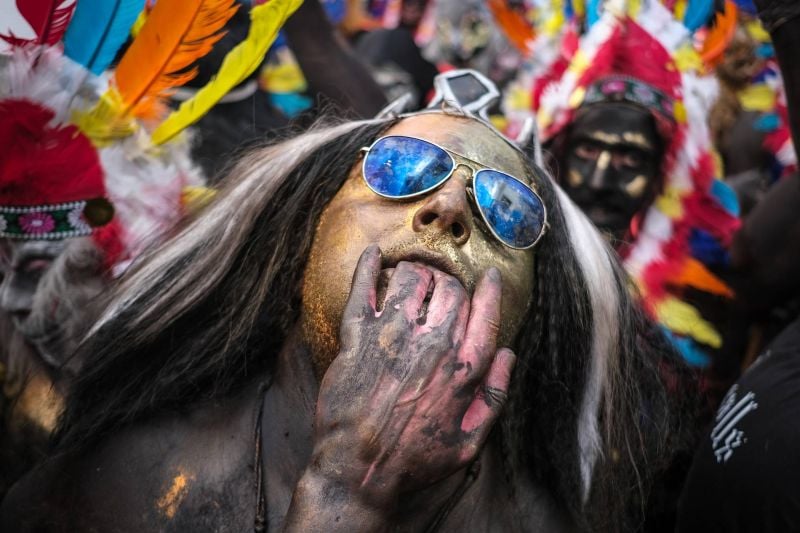
Zambo revelers march through the streets of Mina, just outside Tripoli, on March 17, 2024. (Credit: João Sousa/L'Orient Today)
MINA, Lebanon — Each year, residents of Mina, on the seaside just outside Tripoli, paint themselves black and gold, don grass skirts and rainbow clown wigs, and march through the stone alleyways beating drums.
Nobody’s totally sure why.
And yet, this past Sunday morning, hundreds of women, men and children do just that — they wear masks, grass skirts and even Viking costumes, waving a huge skull-and-crossbones pirate flag. One older man splits through the crowd in a banana suit. A small team of Lebanese majwez and drum players join them in red tarbouch hats as smiling residents watch from balconies.
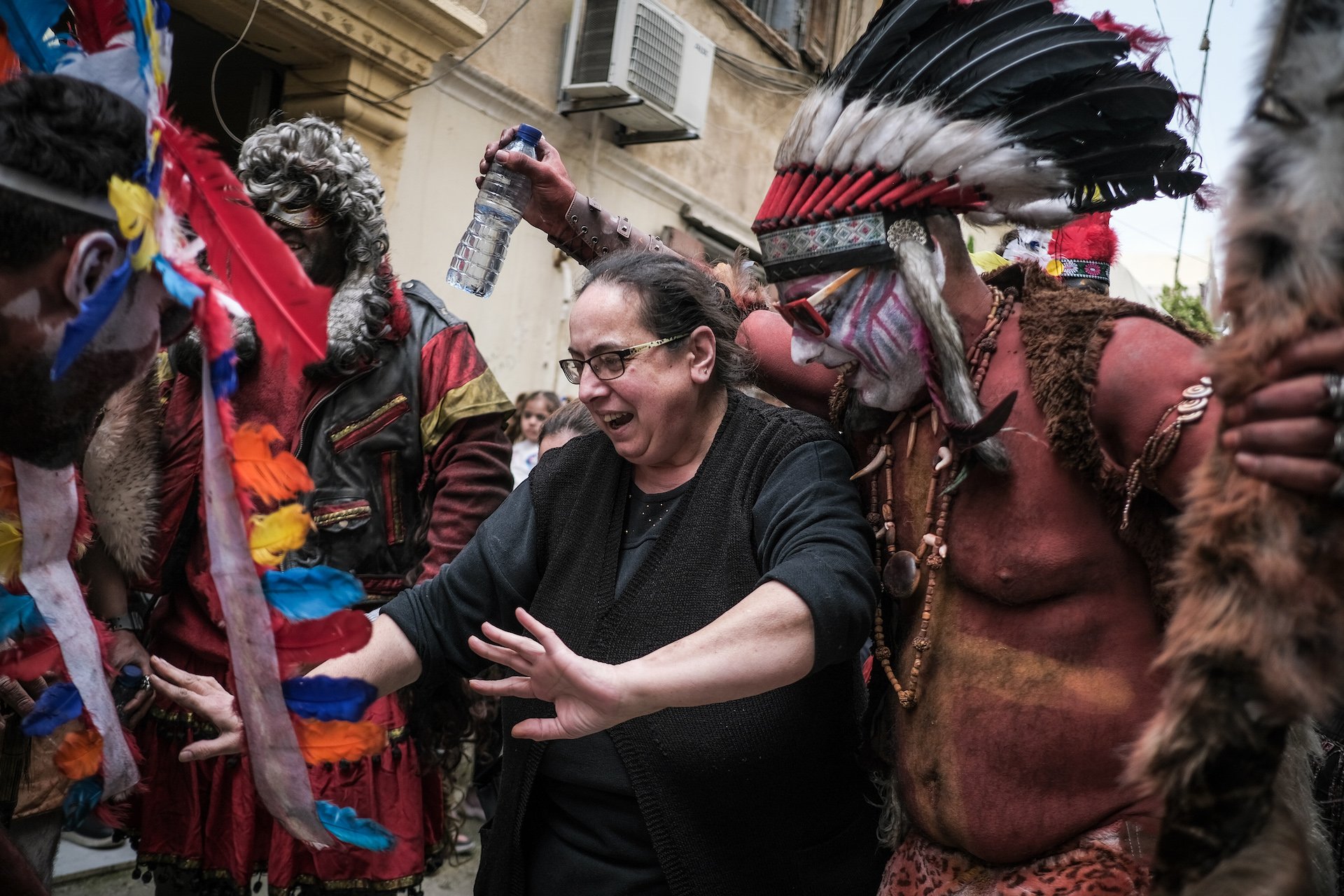 Zambo revelers march through the streets of Mina, just outside Tripoli, on March 17, 2024. (Credit: João Sousa/L'Orient Today)
Zambo revelers march through the streets of Mina, just outside Tripoli, on March 17, 2024. (Credit: João Sousa/L'Orient Today)
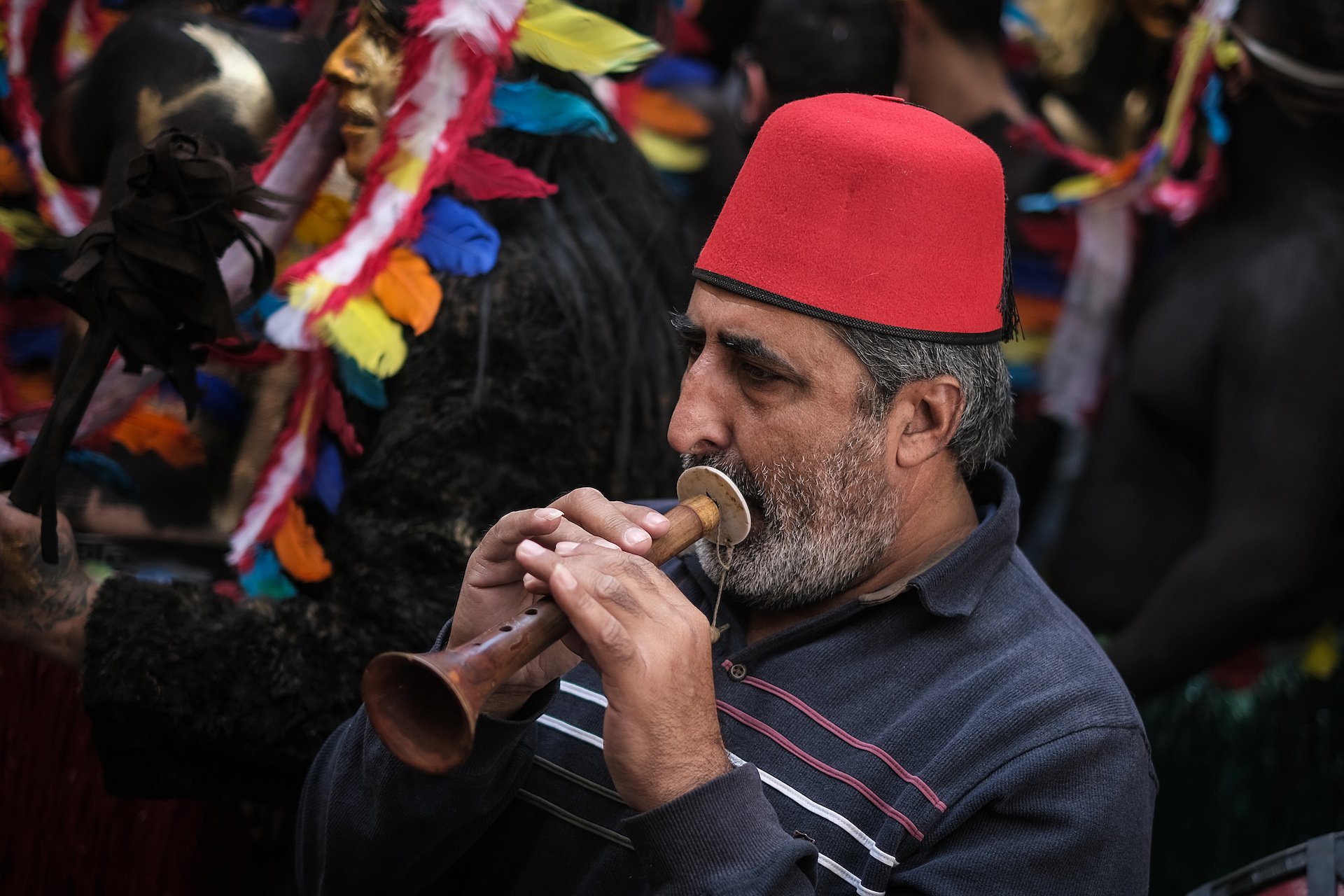 Zambo revelers march through the streets of Mina, just outside Tripoli, on March 17, 2024. (Credit: João Sousa/L'Orient Today)
Zambo revelers march through the streets of Mina, just outside Tripoli, on March 17, 2024. (Credit: João Sousa/L'Orient Today)
The annual tradition, unique to Mina, is meant to mark the day before Orthodox Lent, and looks kind of like Brazil’s Carnival and New Orleans’ Mardi Gras.
But ask residents where Mina’s tradition comes from and “everyone comes up with a different story,” says Nour Sarrag, a Lebanese University sociology student who researches Zambo and Tripoli. She’s hoping to use her research to create a crowd-sourced interactive map of Tripoli history and culture.
According to her, Zambo “is believed to have been imported here from Greek and Brazilian expats,” anywhere from 50 to 100 years ago, depending on who you ask. “The history is so intertwined that you can’t really say ‘they have Greek origins.’ Same with Brazil.’”
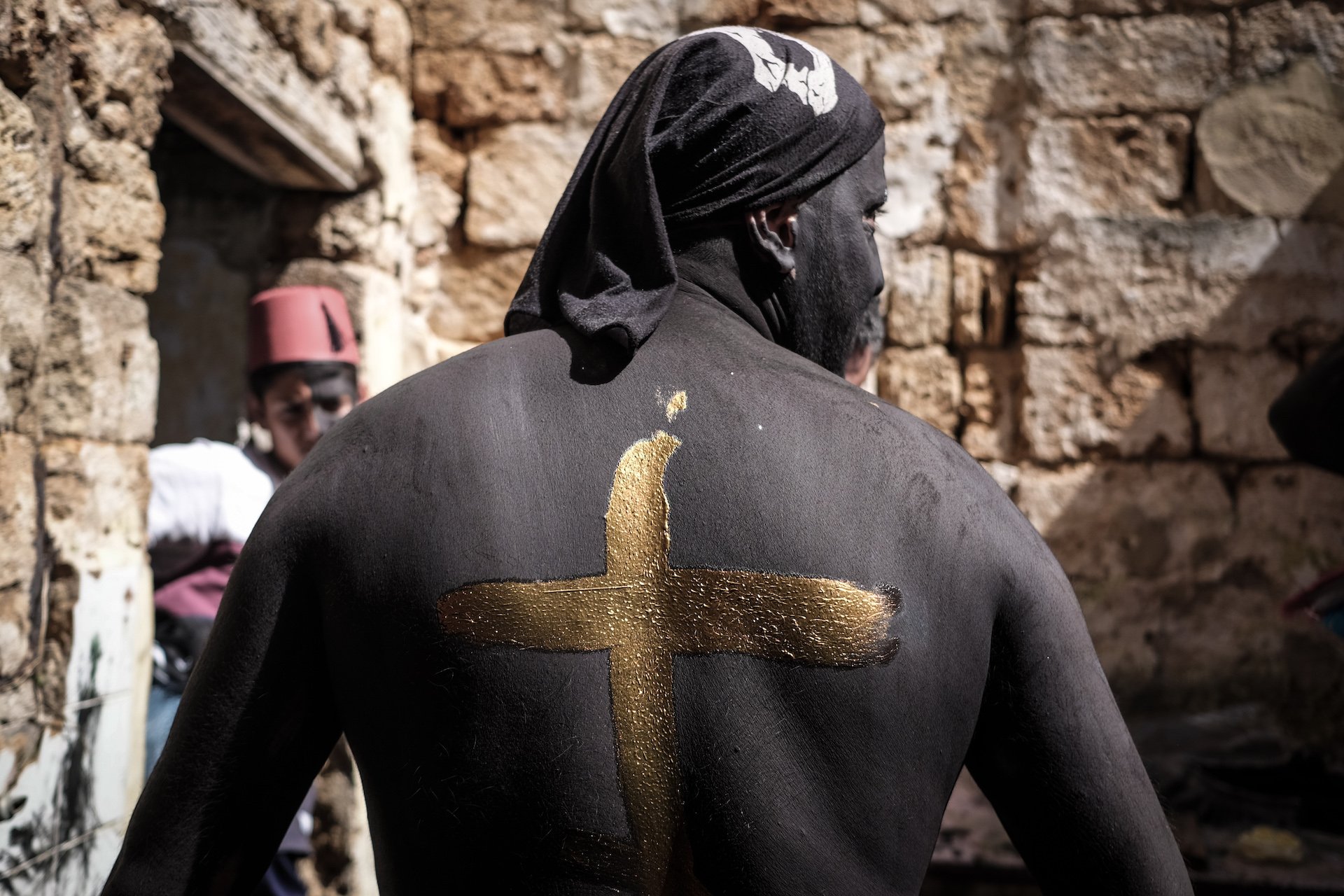 A mean wears black and gold makeup for the annual Zambo festival in Mina, just outside Tripoli. March 17, 2024. (Credit: João Sousa/L'Orient Today)
A mean wears black and gold makeup for the annual Zambo festival in Mina, just outside Tripoli. March 17, 2024. (Credit: João Sousa/L'Orient Today)
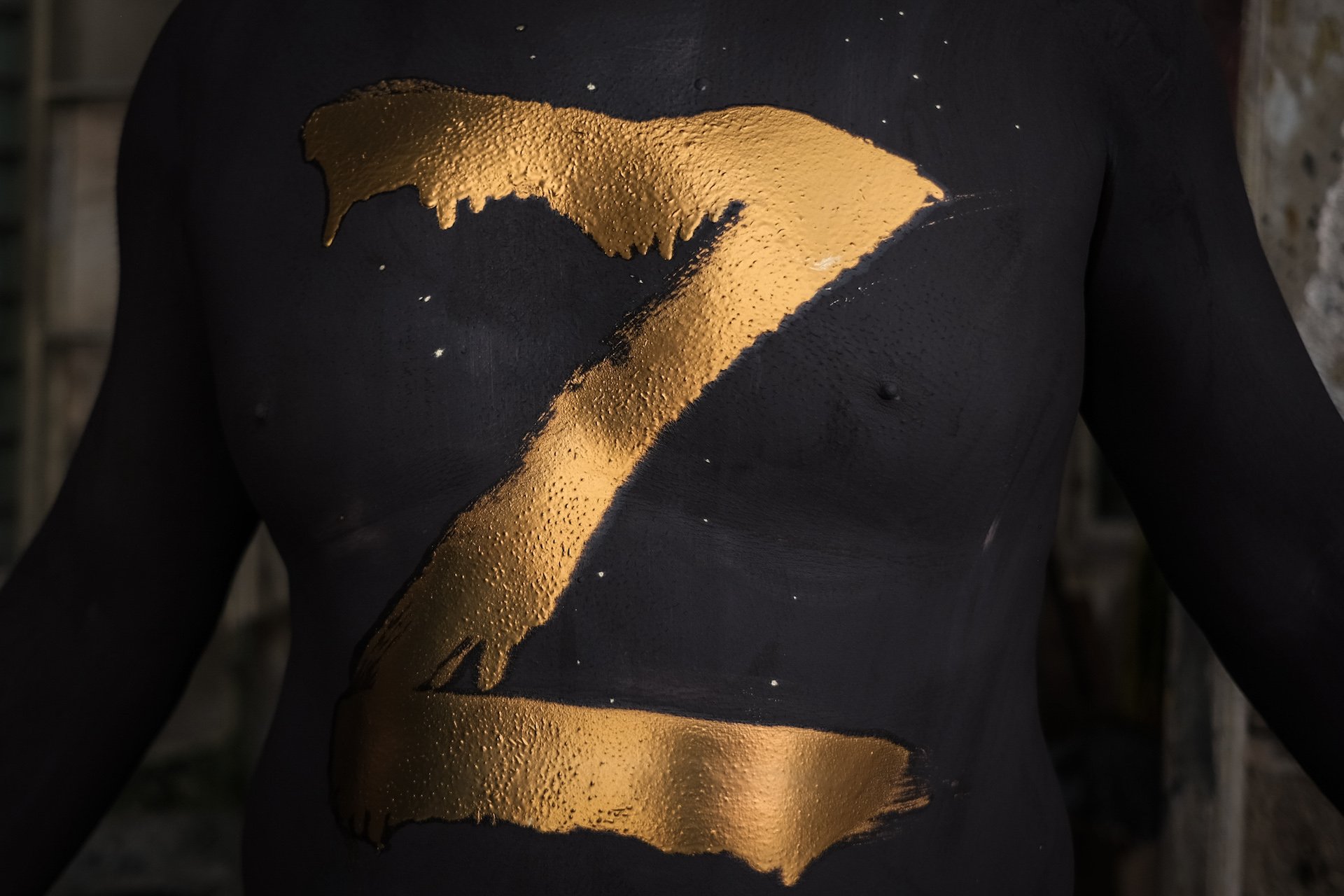 A mean wears black and gold makeup for the annual Zambo festival in Mina, just outside Tripoli. March 17, 2024. (Credit: João Sousa/L'Orient Today)
A mean wears black and gold makeup for the annual Zambo festival in Mina, just outside Tripoli. March 17, 2024. (Credit: João Sousa/L'Orient Today)
The festival’s name is also elusive. The Spanish word zambo was historically used in the days of the Spanish Empire to refer to people of mixed African and indigenous ancestry. According to the Oxford Dictionary, that Spanish term may have been one ancestor of the English racial slur “sambo.” Closer to Lebanon, one Jordanian chocolate company sells a treat called “Sambo” with packaging that shows a racist depiction of a Black character.
Also, perhaps related by some other thread lost to time, is a 1972 Italian B-movie titled “Zambo: King of the Jungle” about a white man galavanting through an unnamed country in Africa.
Did Mina’s Zambo come from any piece of that etymological puzzle?
“I’ve asked priests, the organizers and residents, and nobody knows,” says Sarrag.
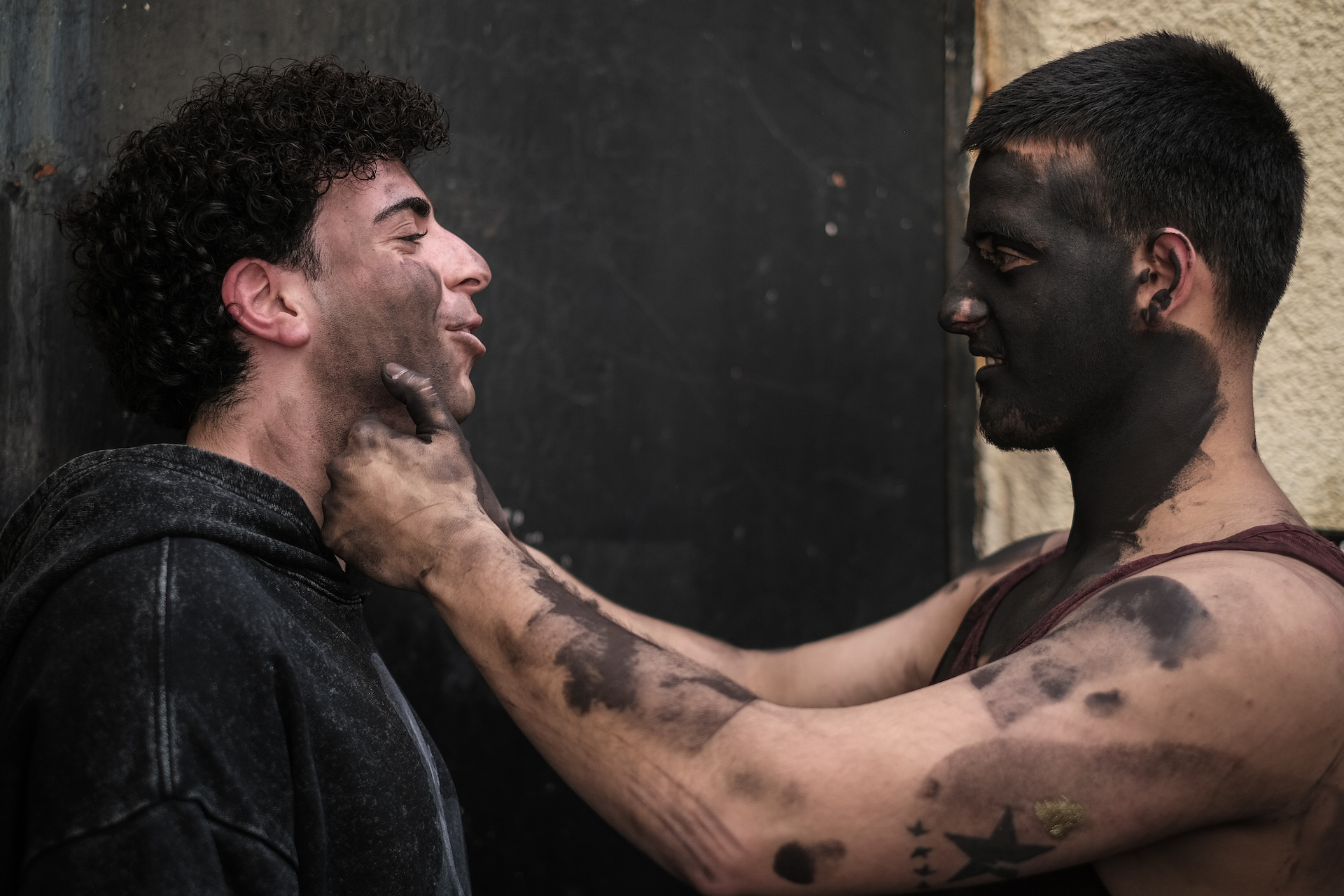 Revelers put on black makeup for the annual Zambo festival in Mina, just outside Tripoli. March 17, 2024. (Credit: João Sousa/L'Orient Today)
Revelers put on black makeup for the annual Zambo festival in Mina, just outside Tripoli. March 17, 2024. (Credit: João Sousa/L'Orient Today)
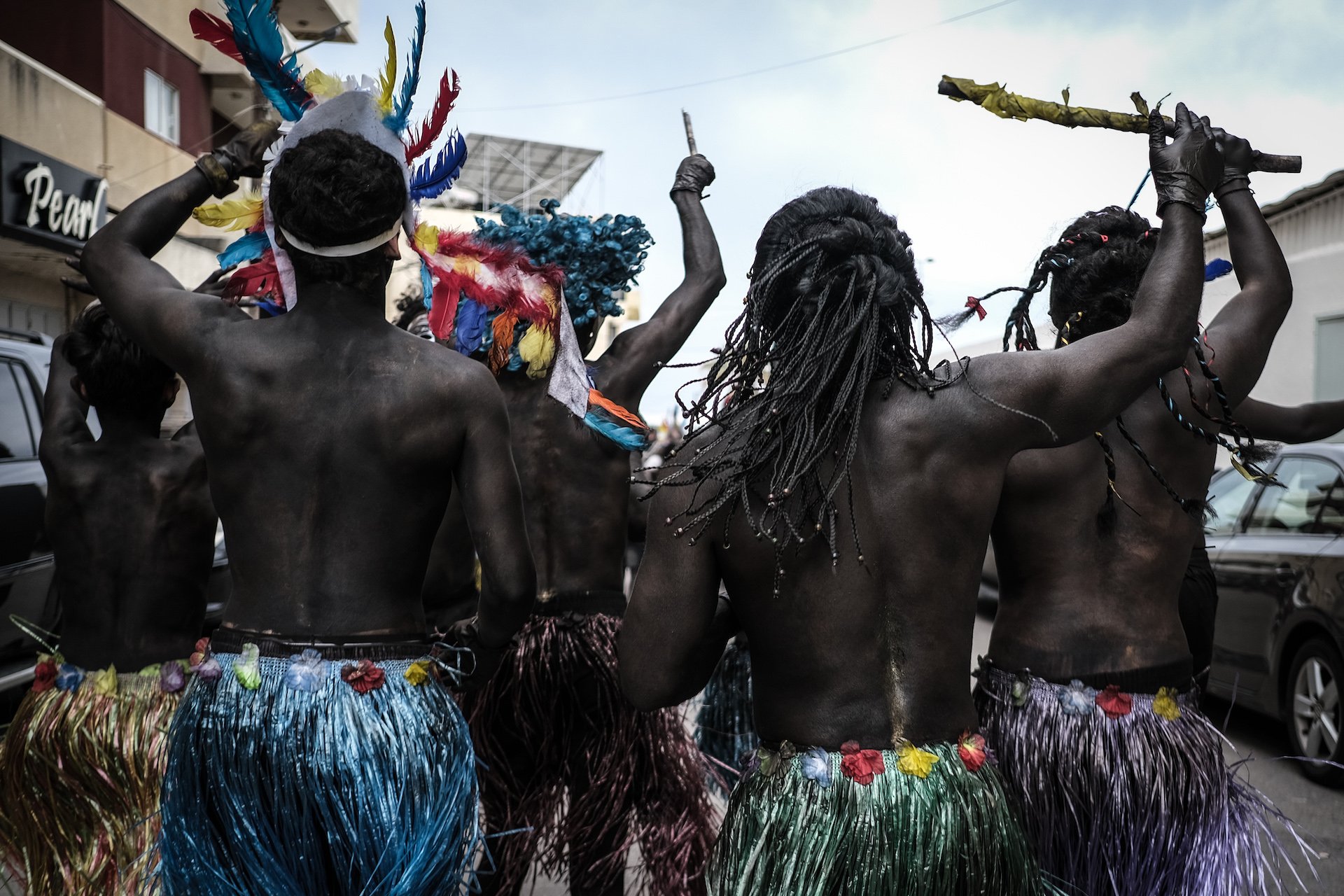 Zambo revelers march through the streets of Mina, just outside Tripoli, on March 17, 2024. (Credit: João Sousa/L'Orient Today)
Zambo revelers march through the streets of Mina, just outside Tripoli, on March 17, 2024. (Credit: João Sousa/L'Orient Today)
Bichara Missi, a 78-year-old lifelong Mina resident, owns a dukkaneh (convenience store) just around the corner from where the Zambo revelers gather to start their procession on Sunday morning. Missi says he used to dress up for Zambo each year, as did his father before him.
On a tiny patch of wall behind the cash register, Missi keeps photos of himself painted and costumed for a Zambo march in 1993. Behind it, an Arabic-language newspaper clipping shows him center-stage in a 2000 Zambo, his trademark thick mustache peeking out of the face paint. He says he has “tons” of other photos and even videos of Zambos from years past, but they’re scattered here and there, and on old VCR tapes.
Does he remember his first time joining Zambo? Not really, it seems. “We were young,” Missi says.
He says no church or organization in particular is responsible for organizing the march — just “the local young guys from Mina.”
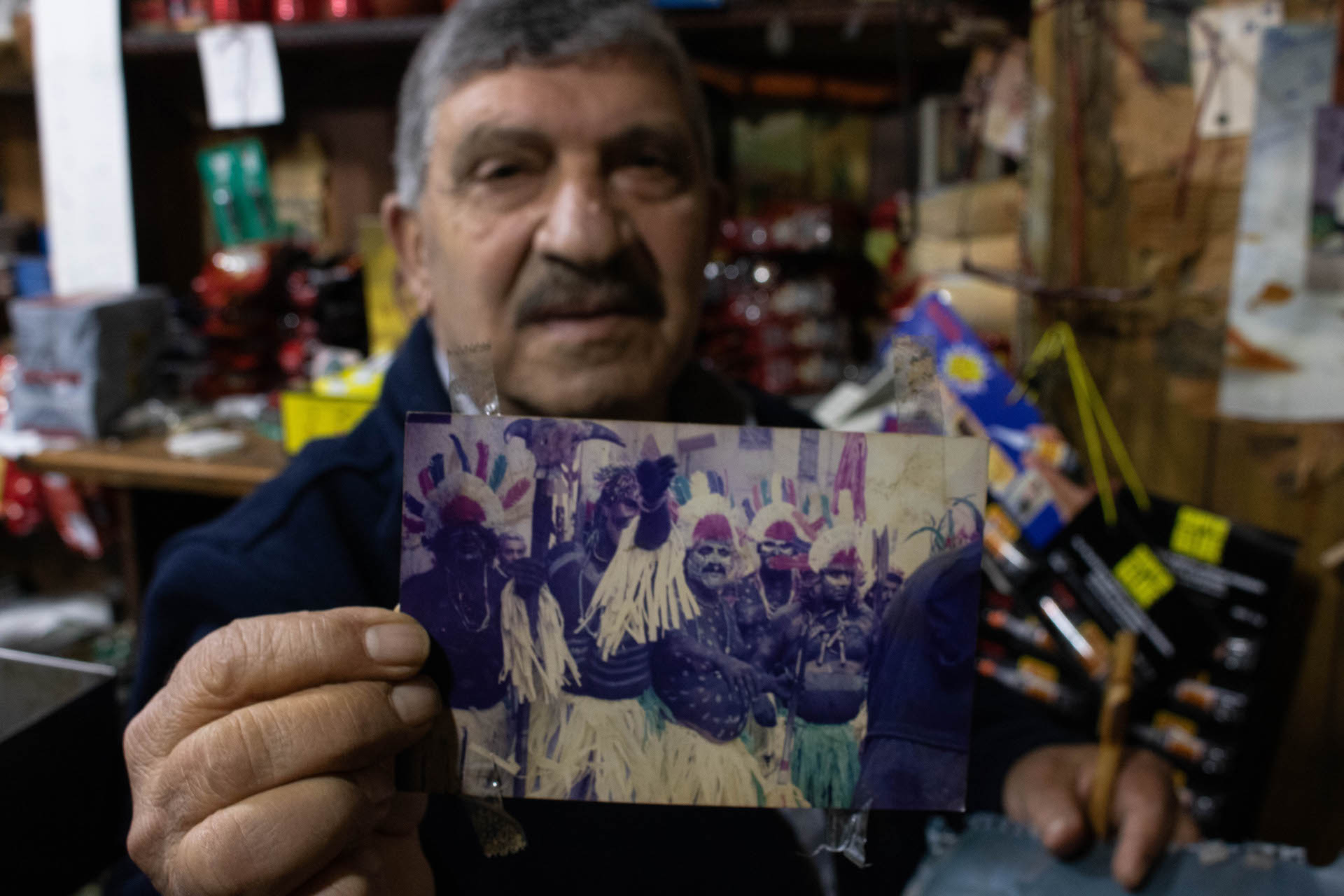 Seventy-eight-year-old Mina resident Bichara Missi holds up a photo of him in Zambo costume in 1993. March 17, 2024. (Crdit: Nicolas Frakes/L'Orient Today)
Seventy-eight-year-old Mina resident Bichara Missi holds up a photo of him in Zambo costume in 1993. March 17, 2024. (Crdit: Nicolas Frakes/L'Orient Today)
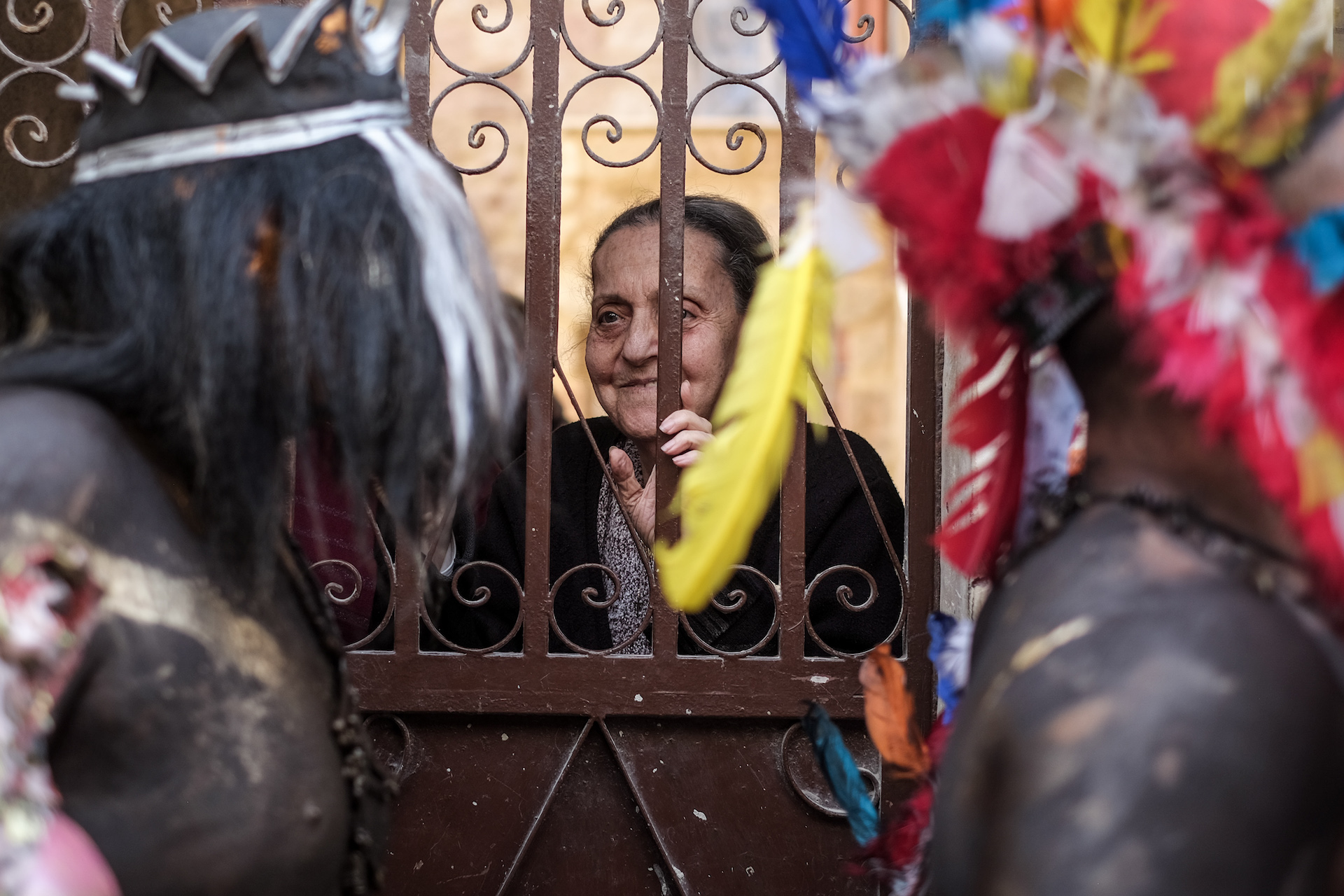 Zambo revelers march through the streets of Mina, just outside Tripoli, on March 17, 2024. (Credit: João Sousa/L'Orient Today)
Zambo revelers march through the streets of Mina, just outside Tripoli, on March 17, 2024. (Credit: João Sousa/L'Orient Today)
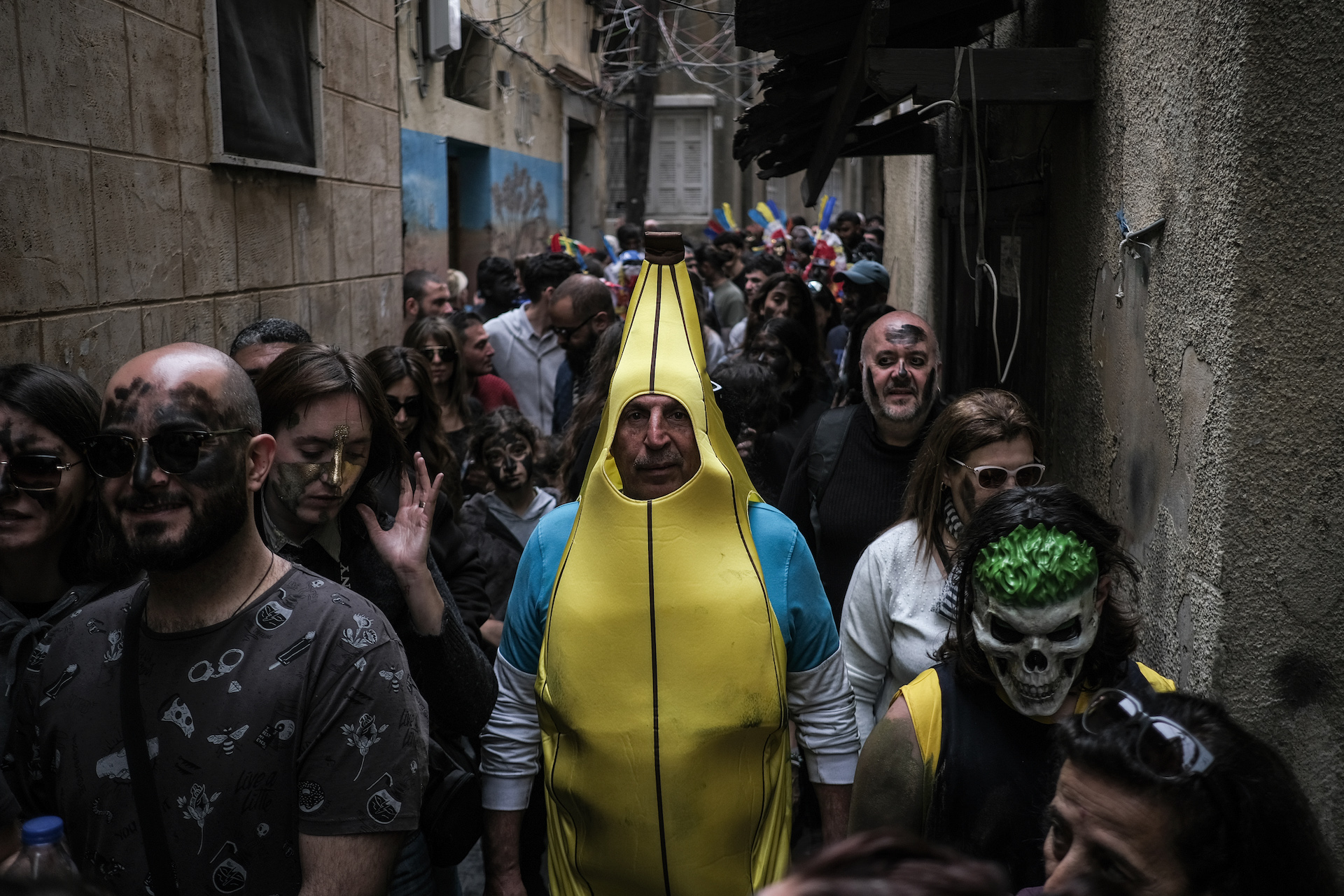 Zambo revelers march through the streets of Mina, just outside Tripoli, on March 17, 2024. (Credit: João Sousa/L'Orient Today)
Zambo revelers march through the streets of Mina, just outside Tripoli, on March 17, 2024. (Credit: João Sousa/L'Orient Today)
Bichara Hassan, one of those local guys, agrees – after all, Hassan is the festival's closest thing to a main organizer. He says he gathered $1,000 in donations from residents to pay for this year’s costumes and makeup.
There’s also the question of the revelers’ black face- and body-paint, which raises eyebrows outside Mina.
According to Sarrag, the researcher, one interpretation is that the black paint is meant to represent the revelers’ “sins,” which they wash off as they jump into the sea at the end of the march.
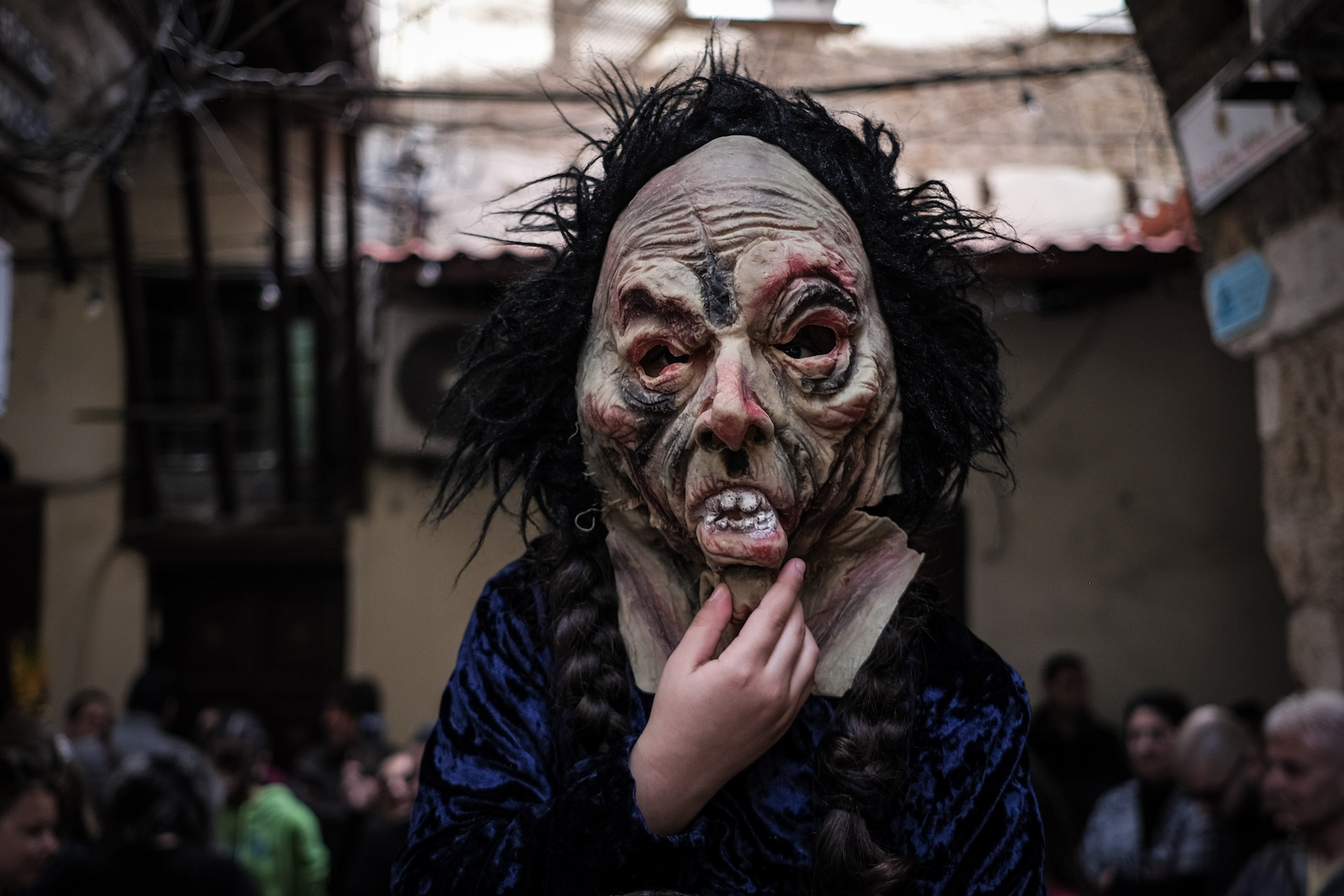 A little girl wears a mask for Zambo on March 17, 2024. (Credit: João Sousa/L'Orient Today)
A little girl wears a mask for Zambo on March 17, 2024. (Credit: João Sousa/L'Orient Today)
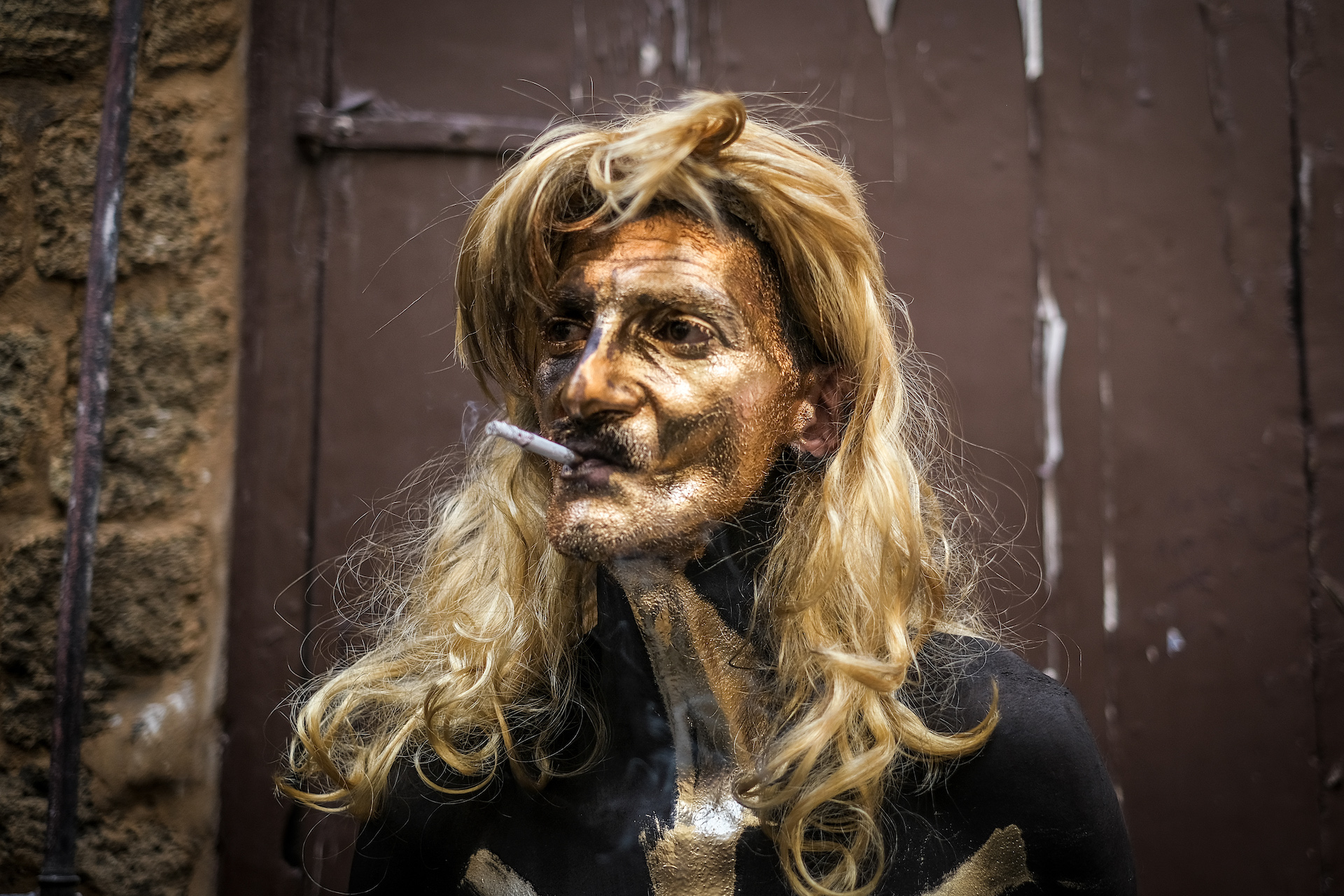 A man wears gold makeup for Zambo on March 17, 2024. (Credit: João Sousa/L'Orient Today)
A man wears gold makeup for Zambo on March 17, 2024. (Credit: João Sousa/L'Orient Today)
One other local legend, however, says that Zambo comes from Mina residents imitating the singing and dancing of Senegalese-French soldiers who were stationed in the city during the French Mandate period.
Though some descendants of those soldiers still live in Mina to this day, it’s unclear to what extent they take part in Zambo.
Hassan claims that the revelers simply grab whatever colorful, loud clothes they have on hand, without any specific aesthetic in mind.
This year, Zambo — and Lent — also come at the same time as Ramadan. Muslims and Christians both march among the Zambo crowd.
Residents of Mina, which has a sizeable Orthodox population but is mixed between Muslims and Christians, say all sects enjoy the festival despite its roots in the Christian Lent.
“What’s nice about [Zambo] is that it brings together Muslims and Christians,” says crowd member Kamille Missi.
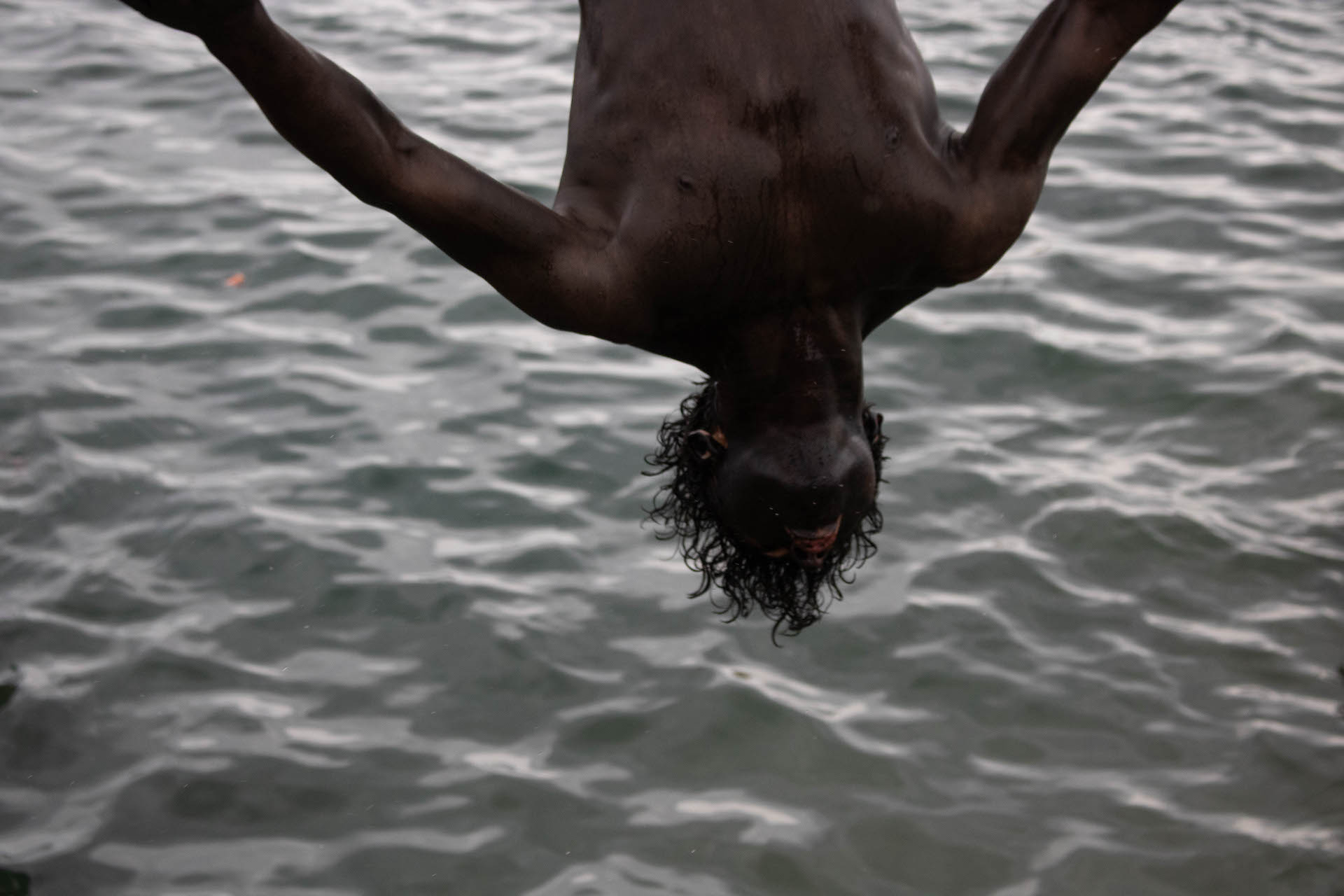 A Zambo reveler jumps into the sea to wash away his black makeup on March 17, 2024. (Credit: Nicolas Frakes/L'Orient Today)
A Zambo reveler jumps into the sea to wash away his black makeup on March 17, 2024. (Credit: Nicolas Frakes/L'Orient Today)
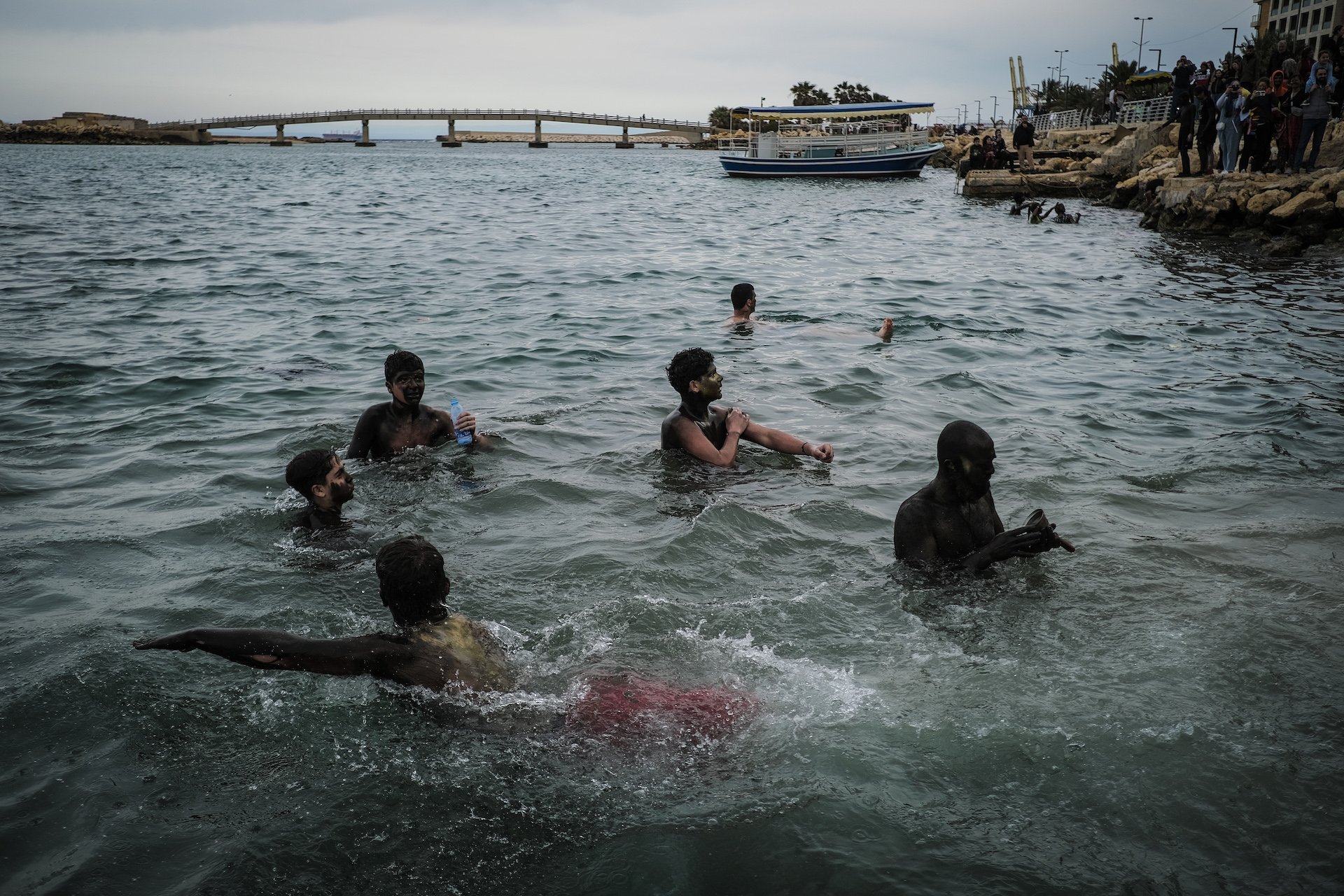 Zambo revelers swim in the sea after the annual parade, which is unique to the Mina district just outside Tripoli. March 17, 2024. (Credit: João Sousa/L'Orient Today)
Zambo revelers swim in the sea after the annual parade, which is unique to the Mina district just outside Tripoli. March 17, 2024. (Credit: João Sousa/L'Orient Today)
